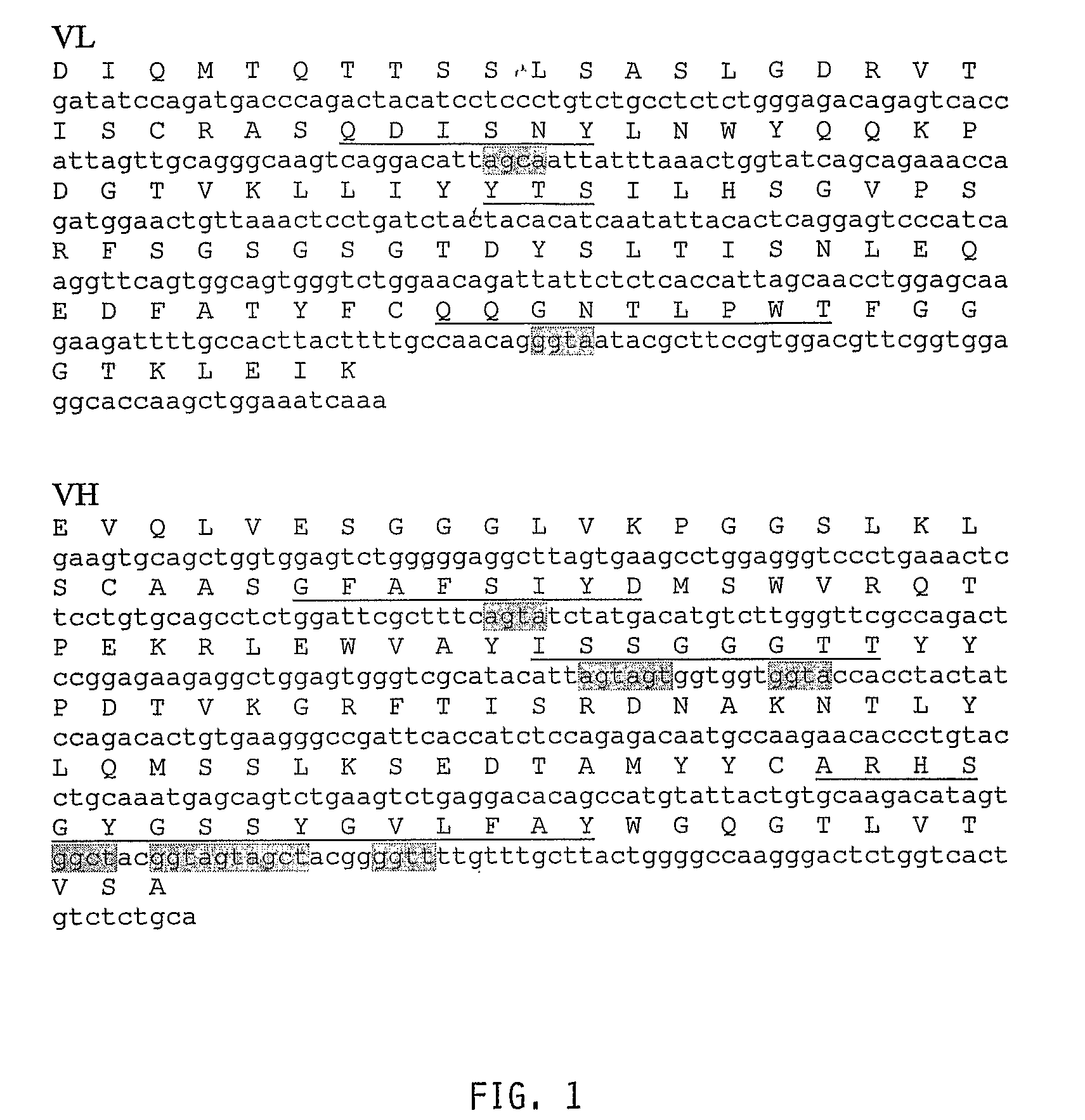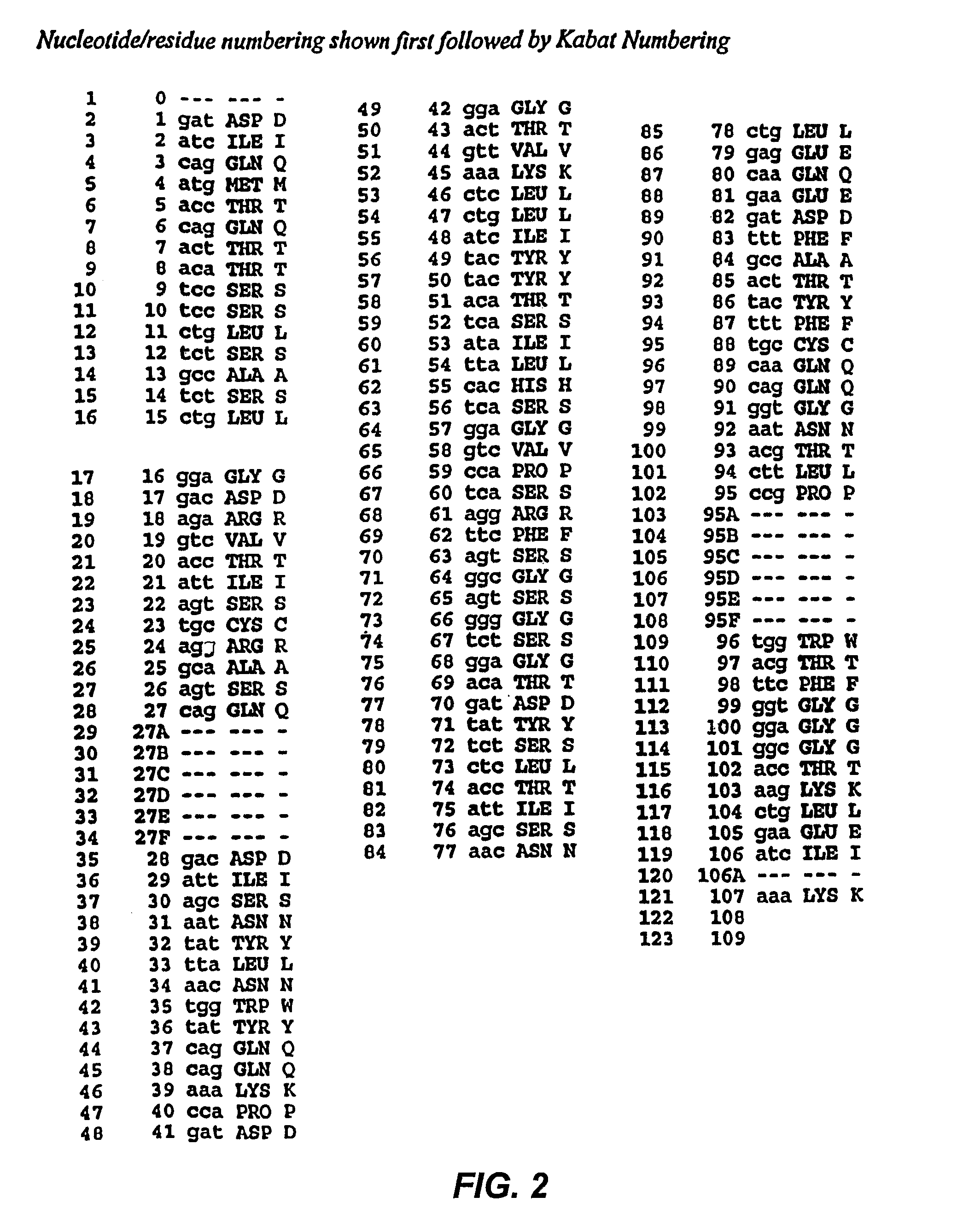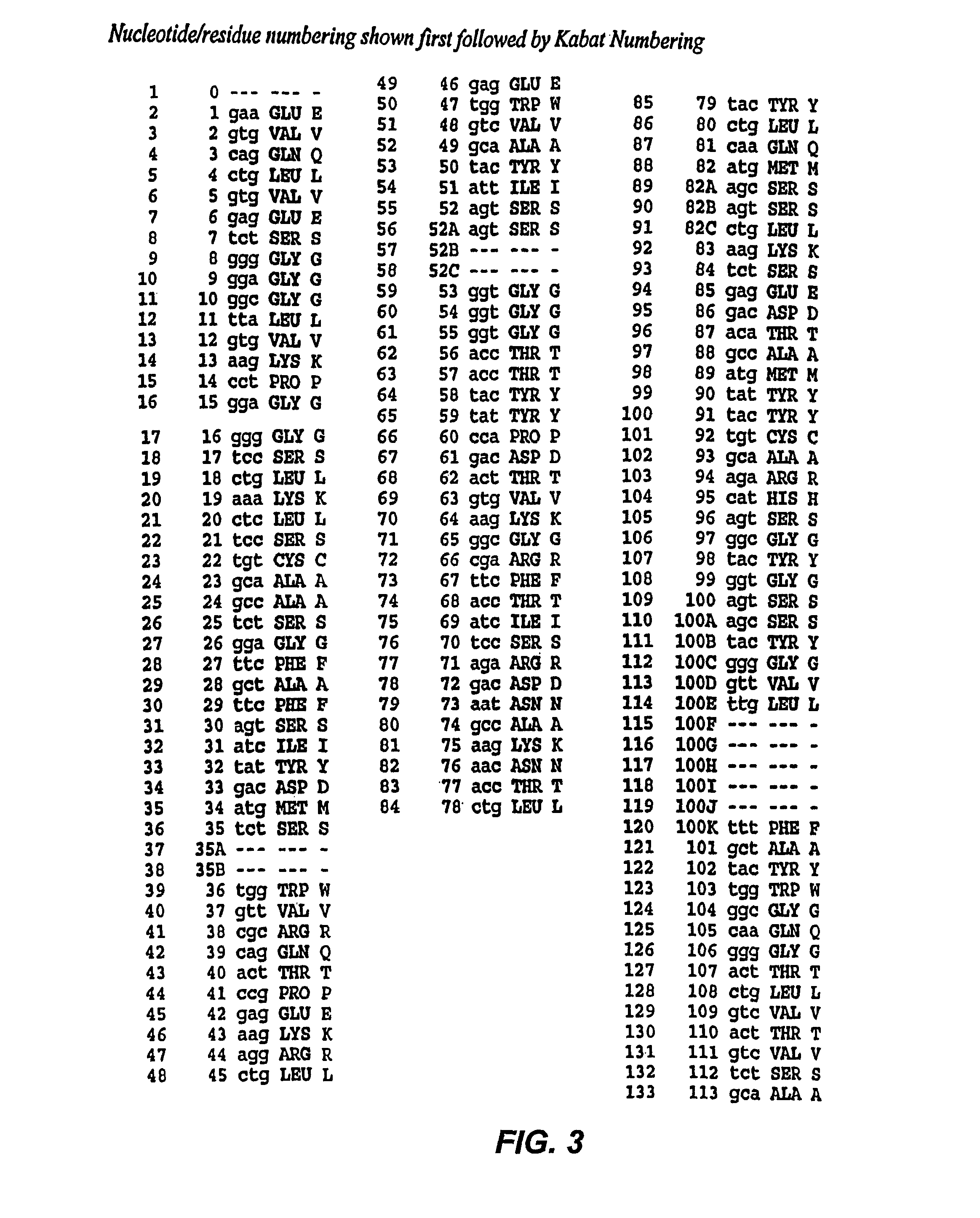Mutated anti-cd22 antibodies and immunoconjugates
anticd22 antibody and immunoconjugate technology, applied in the field of mutated anticd22 antibodies and immunoconjugates, can solve the problems of inability to induce long-term complete remission of hematological malignancies, inability to obtain atomic resolution structural data for most antibodies, and inability to induce long-term complete remission of conventional therapies
- Summary
- Abstract
- Description
- Claims
- Application Information
AI Technical Summary
Benefits of technology
Problems solved by technology
Method used
Image
Examples
example 1
[0202]HA22 is a recently developed, improved form of BL22, in which residues SSY in the CDR3 of the antibody variable region heavy chain (H-CDR3) were mutated to THW. HA22 is described in detail in Salvatore, G., et al., Clin Cancer Res, 8(4):995-1002 (2002) and in co-owned application PCT / US02 / 30316, International Publication WO 03 / 027135).
[0203]To see if the affinity of HA22 could be further improved, a phage-display library (LibVL30 / 31) targeting a hot spot within the light chain CDR1 (L-CDR1) of HA22 was constructed. The sequence analysis of ten clones from mutant library LibVL30 / 31 showed that the targeted hot spot was randomized by PCR (Table 1).
[0204]
TABLE 1Sequence analysis of mutant library LibVL30 / 31-3Clonentaa1CACCTGHis-Leu2TACCAGTyr-Gln3TTCGGCPhe-Gly4GAGGCCGly-Ala5ACCTGCThr-Cys6AGGAACArg-Asn7GAGAGCGly-Ser8TGCGTGCys-Val9TGCTGGCys-Trp10 AGCATGSer-Met
Subtractive Biopanning of Phage Display Libraries and FACS Analysis
[0205]In order to mimic somatic hypermutation in the immun...
example 2
[0219]This Example sets forth the materials and methods in the studies reported in Example 3.
Site-Directed Mutagenesis
[0220]Mutations were introduced using two-step overlap PCR method and the RFB4 (VH-GTHW (SEQ ID NO:29))—PE38 plasmid DNA used as template. Mutagenic primers that contain mutated sites (bold letter) and restriction endonuclease sites of Sal I and EcoRI (underlined) are as follows: primer A (5′-GAACCCGACGCAGCC GGCCGTATCCGCAAC-3′ (SEQ ID NO:25), upstream) and primer B (5′-GTTGCGGATA CGGCCGGCTGCGTCGGGTTC-3′ (SEQ ID NO:26), downstream) and primer C (5′-GCTGTCGTGGAACCAGGTCGACCAGG-3′ (SEQ ID NO:27)) and primer D (5′-CTTT GTTAGCAGCCGAATTCATATTCGAT-3′ (SEQ ID NO:28)).
[0221]First, PCR reactions were amplified using primers A and D or primers B and C. The PCR profiles for 1st reactions were as follows: 30 cycles of 1-min denaturation at 95° C., 1.3-min annealing at 58° C., and a 2-min extension at 74° C., followed by a final 5-min incubation at 72° C. A portion (0.01 ml) of eac...
example 3
[0235]This Example sets out the results of experiments conducted with R490A mutated PEs.
[0236]HA22 is a recombinant immunotoxin that has a high affinity for CD22 and is very active in killing cells from B cell malignancies that express CD22. The goal of the present study was to make a mutant of HA22 resistant to proteolytic digestion and, hopefully, therefore increased anti-tumor activity, either because of less non-specific intracellular proteolytic degradation or decreased degradation in the circulation. Previous studies had shown that destruction of a proteolytic digestion site brought about by deletion of arginine 490 in domain 3 of native PE resulted in an increase in the half-life of PE in the circulation of mice. To minimize any changes in protein structure that a mutation at position 490 might introduce, R490 was mutated to alanine rather than deleted, as was done previously with native PE (Brinkmann, U., et al., Proc Natl Acad Sci USA, 89(7):3065-9 (1992)).
[0237]Preparation...
PUM
| Property | Measurement | Unit |
|---|---|---|
| average bond energy | aaaaa | aaaaa |
| temperature | aaaaa | aaaaa |
| temperature | aaaaa | aaaaa |
Abstract
Description
Claims
Application Information
 Login to View More
Login to View More - R&D
- Intellectual Property
- Life Sciences
- Materials
- Tech Scout
- Unparalleled Data Quality
- Higher Quality Content
- 60% Fewer Hallucinations
Browse by: Latest US Patents, China's latest patents, Technical Efficacy Thesaurus, Application Domain, Technology Topic, Popular Technical Reports.
© 2025 PatSnap. All rights reserved.Legal|Privacy policy|Modern Slavery Act Transparency Statement|Sitemap|About US| Contact US: help@patsnap.com



